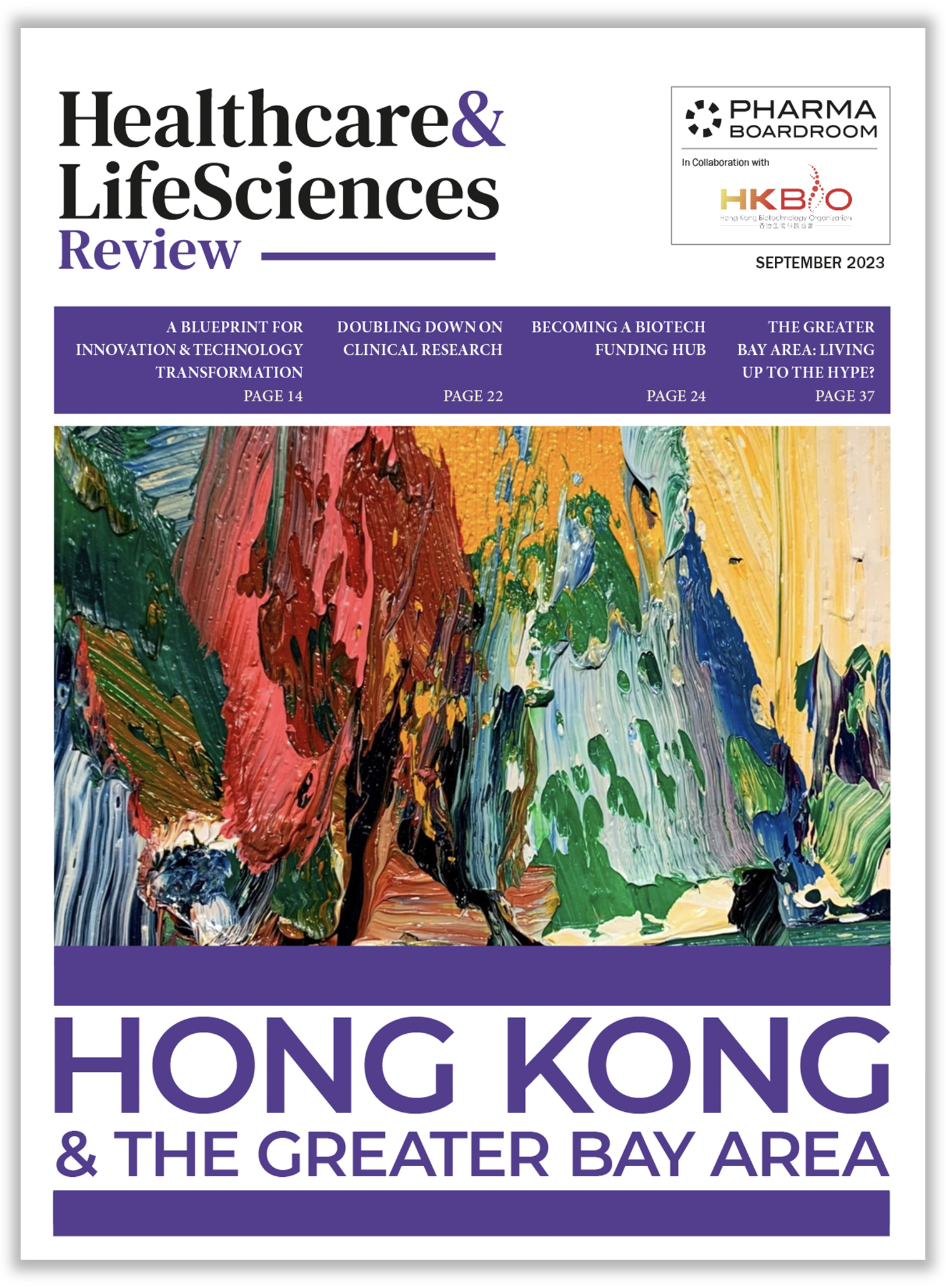The chairman of Singapore’s Medical Technology Industry Group, Albert Lee discusses the association’s key priorities, how they serve to advance the interests of both multinational and local members, and the key challenges that the medtech industry faces in transition from product-based to solutions-based care.
Can you provide an overview of the organization’s functional activities in Singapore, as well as describe how its scope has evolved alongside the country’s own development?
MTIG was set up in 1996, in direct relation to the establishment of a regulatory body governing the registration of medical devices.
But over the years, the scope of the organization has evolved as the healthcare regulatory landscape began to mature and stabilize.
MTIG’s objective is a reflection of the members that we have. Contrary to many other trade associations, we have approximately 100 members that are split evenly among MNCs and SMEs. This paints a clear representation of Singapore’s medical device landscape—a facet that serves crucial importance when engaging in dialogue with government stakeholders.
We strive to become the leading voice of the medical device industry in Singapore in the face of both our internal and external stakeholders including the Ministry of Health, Ministry of Trade, as well as the country’s patient population.
What topics are currently at the top of your agenda as chairman?
There are many, depending on how we look at what we’re doing. The healthcare industry, especially regarding medical devices, is very diverse—from companies selling high tech equipment such as MRI machines or brain scanners to companies selling more commoditized products such as syringes or gloves. We’re talking about a very diverse group of member companies, not only just from the perspective of MNCs and SMEs, but also diversity in terms of interests.
[Featured_in]
Singapore is not unlike any other country in the region, exhibiting an aging population, rising healthcare costs, and longer quality of life. Consequently, healthcare is increasingly edging into the spotlight of government priorities, with the Ministry of Health centering its Vision 2020 on driving quality, affordability, and access of care. As an industry group we aim to support those objectives by working with the Health Sciences Authority (HSA) to put patient safety first, streamline product registrations, while also employing education and training initiatives to help healthcare practitioners keep up with the pace of change.
Externally, we are making sure that MNCs have the proper resources to effectively utilize Singapore as launch pad into the neighboring markets. In parallel, we need to get the SMEs ready and their capabilities built so that they can extend their presence beyond the borders of Singapore and play an active role in international companies’ supply chains. We are also looking into ways MNCs can transfer knowledge for SMEs to get there.
As you mentioned, MTIG represents a very broad and diverse array of interests, equally catering to the interests of multinational and local companies. As a collective association, how do you mitigate the risk of spreading yourselves too thin?
The challenge is that potentially we may be spreading ourselves too thin, but when we look at the ecosystem, we can’t look at the healthcare system in segmented groups, as it is a whole value chain, and complex as it is. If looking purely at SMEs, without MNCs, the ecosystem doesn’t work. The beauty of us being together is that we really can articulate what the needs of the industry are as a whole. One organization will support another, one company will support another, and one value chain will support another.
Why has medical technology been such a key priority for the state (Singapore), in your perspective?
Looking inwards, it is driven by demographics and the overall needs of the citizens. As we say, Singapore is one of the most developed countries in the world, yet we have different strata of patients who are able to afford different things. So how do we let the top tier have a choice in choosing the best medical devices that they can afford, while ensuring that the middle to low-income tiers maintain widespread access to quality healthcare? Singapore is an aging population, and not only are patients aging, they are also living longer and expecting a good quality of life. Because of that, the demand for medical devices, implants and care is high and in the worry circle of every citizen—thus becoming a top priority for the state. How companies should not just provide a product, but a solution as well, becomes really important.
Externally, as with any trade, Singapore is targeting the highest value of the technology curve. Medical devices is an industry segment where the country—given its capabilities in biomedical sciences and engineering—can carve out a unique value proposition globally, while effectively helping to advance the innovation frontier.
With the influx of multinational investment entering the country, how has the local industry fared?
[related_story]
Over the last ten years as we build medical technology into a strategic pillar for Singapore, a lot of smaller companies feel that they need to focus on one area of expertise rather than the whole value chain. So if you’re in the innovation space, the question then comes down to how do you innovate faster than anybody else? No one has a monopoly on science. As such, for smaller companies it’s about finding a space where they can innovate and do much better than others, collaborating to complement any shortcomings, or amalgamating into a large organization where it can unlock its value and distribute its products.
What must Singapore really start focusing on now to make it more relevant for the medtech industry in the long-term?
Innovation is the primary aspect that will help differentiate us against our peers. There is no monopoly on science—it’s a combination of scientists, schools, universities, physicians, the industries, and VCs coming together to form an ecosystem to support innovation. To solve healthcare issues all around the world from a product, solution and value perspective, it’s really important that innovation remains at the forefront of our focus.
Can elaborate on one or two examples of effective partnerships that Singapore has facilitated with the industry here to advance the scientific frontier, as you mentioned?
One-North, which the government recently spoke about, creates a hub where regulators, companies and scientists come together. It’s ten years in the making and every building is a part of it (Biopolis, Fusionopolis, etc.). The Launch Pad is also close to One-North, and targeted at small to medium-sized organizations who want to have access to entrepreneurial experience to help launch their innovations. The country has done a lot in trying to make it attractive for people, driving scientific collaboration among public and private parties, which has clearly not only appealed to SMEs, but also large MNCs. The joint physical space, coupled with supporting policies and infrastructure has created a unique ecosystems with innovation can thrive.
From a broader perspective, what would you highlight as some of the biggest challenges that the medtech industry will be facing in the coming years?
Working with providers and payers to move from selling a product, implant or device, to the selling of solutions. We’ve reached a point in healthcare standards where gloves are not what people want to buy; they are buying infection control. Similarly, we are not selling knee implants; we are selling mobility and patient healing. It is not something that we can solve ourselves, as it must be in partnership and dialogue with healthcare regulators and providers.
To understand what role we play, we have to understand the pressure point of the healthcare system. Typical the C-suites of hospitals are occupied with four primary worry circles, depending on if they are private hospitals or public teaching institutions: driving demand, serving more patients, maximizing resources, and improving efficiency and quality of care.
To adequately address these challenges, the medtech industry then needs to start looking beyond physicians to also incorporate patient and demographic needs, as well as provider and payer needs, into the mix.
These are very key challenges that can also apply to pharmaceutical industries as well, so what sort of parallels can they draw from each other and how can the healthcare system really benefit?
It’s letting the curtains of pharmaceutical and medical companies fall and looking at others as players of the healthcare space. Sometimes, segmentation is what we’re brought up with and thus we get used to it. Over the last ten years, the healthcare industry has been moving from open surgeries to minimally invasive surgeries; and then from minimally invasive surgeries to pharmaceutical intervention, which, in many respects can be considered the most minimally invasive form of surgery. So the health pathway for patients looking at options depends on the severity of their situation, it cuts through from pharmaceutical to minimally invasive surgery, to surgery. Putting the patients in the center, the curtains between what we call sectors will fall apart because at the end of the day they’re just looking for solutions to have a better quality of life and to alleviate suffering.
You’ve been in this industry for quite some time now. Personally speaking, what excites you the most about the healthcare space in the coming years?
I think I speak for all the member companies and people who participate in the healthcare industry. While the challenges are real, the frustrations are there. The day-to-day issues are there, but in the end, we collectively participate in the area of healthcare. For me, in twenty years, I know that I must have in some way, stood in the shadow of a physician and in the end, delivered better care. And if one patient out there has felt better because we pushed for innovation, better access and affordability, the journey is worth taking. I think this is why people choose to be in healthcare. I always say that the work that I do is not just selling a lip color, I’m making people feel better, and that keeps me going. That keeps a lot of member companies up in the morning saying, hey, you know what? Of all the things we do, if one person feels better, it’s worth the journey.
Having just been re-elected for another two years, what are you aiming to achieve in your renewed term?
Aside from expanding our membership base, we look forward to elevate a few SMEs in the medtech industry to become regional and global players. That would be a big win for the industry. We would also be quite keen on having a few innovations that come from the country’s entrepreneurial SMEs purchased by VCs or MNCs to effectively enter the global arena. I think having a few companies that shine in Singapore, with innovations that come from Singapore, will be a key achievement for us in becoming a leading voice.







